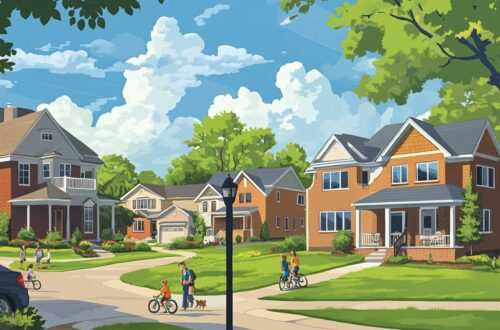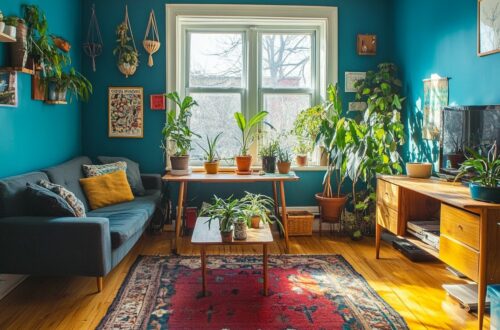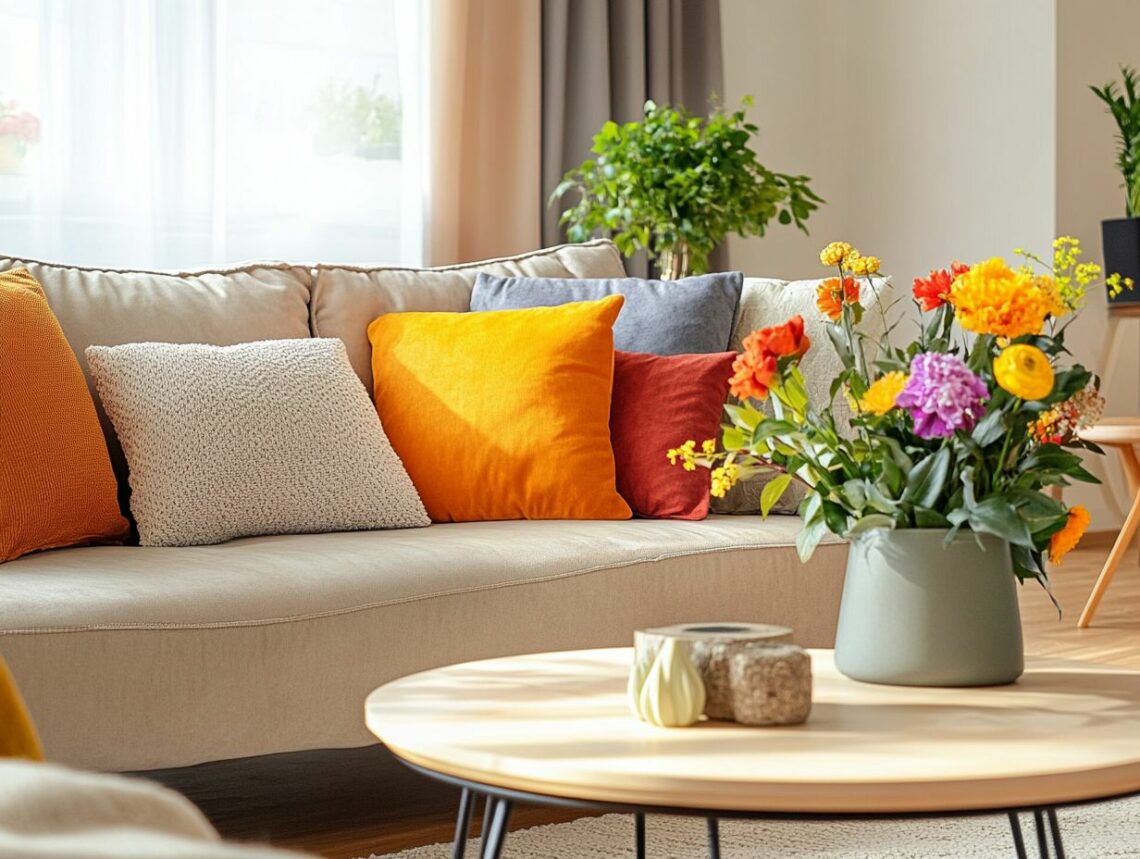
How to Stage Your House for a Quick Sale
Selling your home can be a daunting task, but effective home staging can make all the difference. This guide covers the essentials of staging your house to attract potential buyers and secure a quick sale.
From understanding the importance of staging and who bears the costs to detailed tips for every room, discover actionable strategies that create a welcoming atmosphere.
Explore the dos and don’ts of staging, and learn whether to hire a professional or go the DIY route. Get ready to transform your space and maximize your home’s appeal!
What Is Home Staging?

Home staging is a strategic process aimed at preparing a residential property for sale by enhancing its appeal to potential buyers. This process facilitates the visualization of their future in the space. It typically involves decluttering the property, rearranging furniture, and selecting suitable decorative items to create a welcoming atmosphere. Staged homes are often accompanied by professional photographs that highlight their best features, effectively attracting greater interest from prospective buyers.
Focusing on key areas such as the living room, kitchen, and master bedroom can significantly influence a buyer’s first impression. For instance, a tastefully arranged living room featuring neutral tones can evoke a sense of comfort and enable buyers to recognize the space’s potential. Similarly, staging the kitchen with thoughtfully selected accessories and neatly organized countertops can underscore its functionality and warmth, thereby enhancing its inviting quality.
Whether one chooses to engage a professional stager or adopt a DIY approach, a solid understanding of home staging principles can contribute to a more efficient selling process and may result in higher offers.
Why Is Home Staging Important?
Home staging is a critical component of a successful sales strategy, as it significantly enhances curb appeal and engages potential buyers. By creating an inviting atmosphere that appeals to the emotional connection buyers can establish, staged homes often sell more quickly and at higher prices. A well-staged property effectively highlights its key features, enabling prospective buyers to envision their lives within the space.
Research indicates that staged homes can sell up to 73% faster than their non-staged counterparts, demonstrating the substantial psychological impact that staging has on potential buyers. By presenting a home that feels warm and lived-in, effective staging evokes positive emotions, which can lead to expedited decision-making and higher offers.
A case study conducted in a competitive market revealed that homes professionally staged achieved an average final sale price that was 10% higher compared to similar properties that remained untouched. These financial advantages, combined with the emotional connection buyers develop when they can readily visualize their future in a meticulously presented environment, underscore the importance of staging as a vital tool in today’s real estate landscape.
Who Pays for Home Staging?
The responsibility for home staging costs generally lies with the sellers; however, there are instances where real estate agents may cover or subsidize these expenses to expedite a sale. Engaging a professional stager can be highly beneficial, particularly given that well-executed staging can lead to a higher selling price.
Alternatively, many sellers choose to stage their homes themselves to minimize costs, utilizing their own resources and creativity to prepare their properties for the market.
Home sellers are often deliberating the advantages and disadvantages of each approach. On one hand, hiring an experienced staging professional brings a wealth of expertise and a discerning eye for design, which can significantly enhance a property’s appeal. This often results in a quicker sale and potentially a higher return on investment.
Conversely, a do-it-yourself (DIY) approach allows homeowners to showcase their personal style while saving money; however, it may lack the professional finesse that is often necessary to attract potential buyers.
Consequently, the significance of effective staging in the home selling process cannot be overstated, as it plays a crucial role in shaping buyers’ perceptions of a home’s value.
The Benefits of Staging Your Home
Staging a home provides numerous advantages, including expedited sales and the potential to attract more desirable buyers, ultimately resulting in a higher selling price.
By employing effective staging techniques, homeowners can cultivate an inviting atmosphere that fosters an emotional connection, facilitating potential buyers’ ability to envision their future within the space.
This strategic investment in staging not only enhances the overall appeal of the property but also distinguishes it in a competitive market.
Steps to Staging a Home
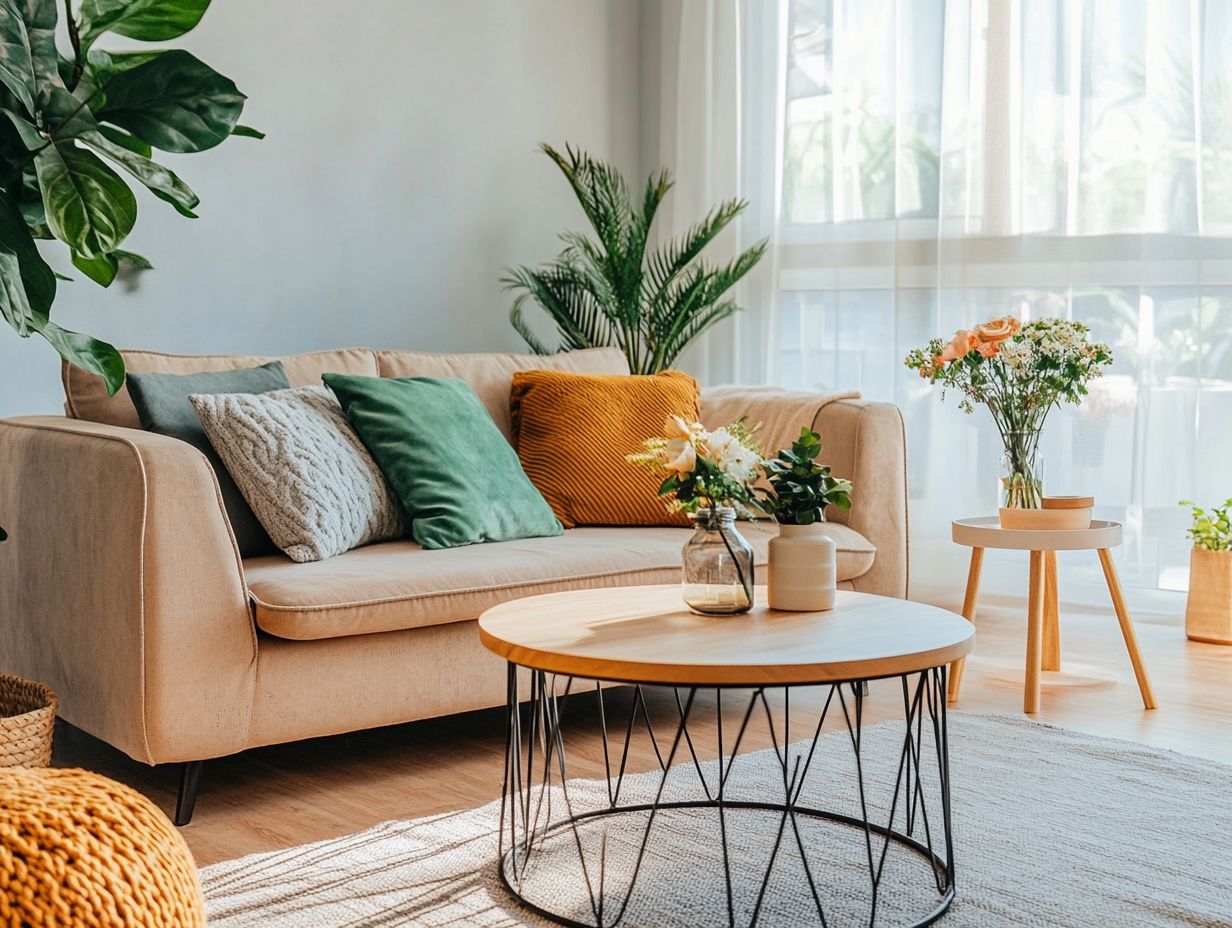
The process of staging a home entails a thorough approach that commences with decluttering areas to establish a cleaner and more inviting atmosphere for prospective buyers.
Homeowners should prioritize organizing closets, employing cleaning supplies to enhance the overall freshness of the space, and rearranging furniture to emphasize the key features of each room, thereby showcasing the home’s full potential.
Each step is crucial in preparing the home for the market and making it appealing to the appropriate buyer.
Decluttering and Depersonalizing
Decluttering and depersonalizing are critical steps in the home staging process that contribute to the creation of an open and inviting environment, thereby facilitating the ability of potential buyers to envision themselves residing in the property. The removal of personal items and excess clutter not only enhances the presentation of available space but also mitigates emotional attachment, allowing buyers to concentrate on the features of the home rather than the belongings of the previous occupants.
To effectively declutter, one should begin by assessing each room to identify which items are essential and which can be removed or stored. Efficient organization techniques may include the use of clear storage bins, labeling boxes, and establishing designated spaces for frequently used items. Adopting a minimalistic approach is advisable, as it simplifies living spaces and creates an ambiance of tranquility that appeals to prospective buyers.
When buyers enter a decluttered home, they are more likely to recognize its potential, fostering positive impressions that can ultimately lead to quicker sales and potentially higher offers.
Cleaning and Repairs
Cleaning and performing necessary repairs are essential actions that enhance the overall appeal of a property and contribute to its market readiness. Utilizing appropriate cleaning supplies to ensure that every corner of the home is immaculate creates a more inviting environment that attracts potential buyers and reflects a commitment to maintenance and care.
Addressing minor repairs can significantly enhance the property’s value and overall impression, ensuring it distinguishes itself in a competitive market.
Prioritizing key areas such as kitchens and bathrooms can yield considerable advantages, as these spaces often leave a lasting impression on buyers. A thorough cleaning of countertops, fixtures, and cabinets, along with ensuring that appliances are spotless and fully operational, conveys a strong message of cleanliness and functionality.
In bathrooms, employing techniques such as re-caulking tubs or repairing leaky faucets not only improves aesthetics but also demonstrates a diligent approach to home upkeep.
A comprehensive cleaning regimen combined with meticulous repairs can greatly elevate a property’s attractiveness, making it more appealing to prospective buyers.
Creating a Welcoming Atmosphere
Creating a welcoming atmosphere is essential in the home staging process, as it significantly influences potential buyers’ ability to envision themselves in the space. Employing staging techniques such as utilizing neutral tones for decor and strategically arranging furniture can contribute to an inviting environment that resonates with buyers. The inclusion of decorative elements, such as fresh flowers or art pieces, can further enhance the home’s overall appeal, making it more memorable.
To achieve this warm ambiance, the importance of lighting should not be overlooked; soft, ambient lighting can mitigate harsh shadows, thereby making rooms appear larger and more inviting. Selecting a cohesive color palette that harmonizes with the overall theme enhances visual flow, encouraging visitors to explore every corner of the home.
Moreover, thoughtful furniture placement not only facilitates movement but also delineates functional areas, creating intimate conversation zones. It is crucial to recognize the impact of small details; even the arrangement of throw pillows can contribute to a sense of comfort, ultimately helping potential buyers feel at home immediately.
Home Staging Tips by Room
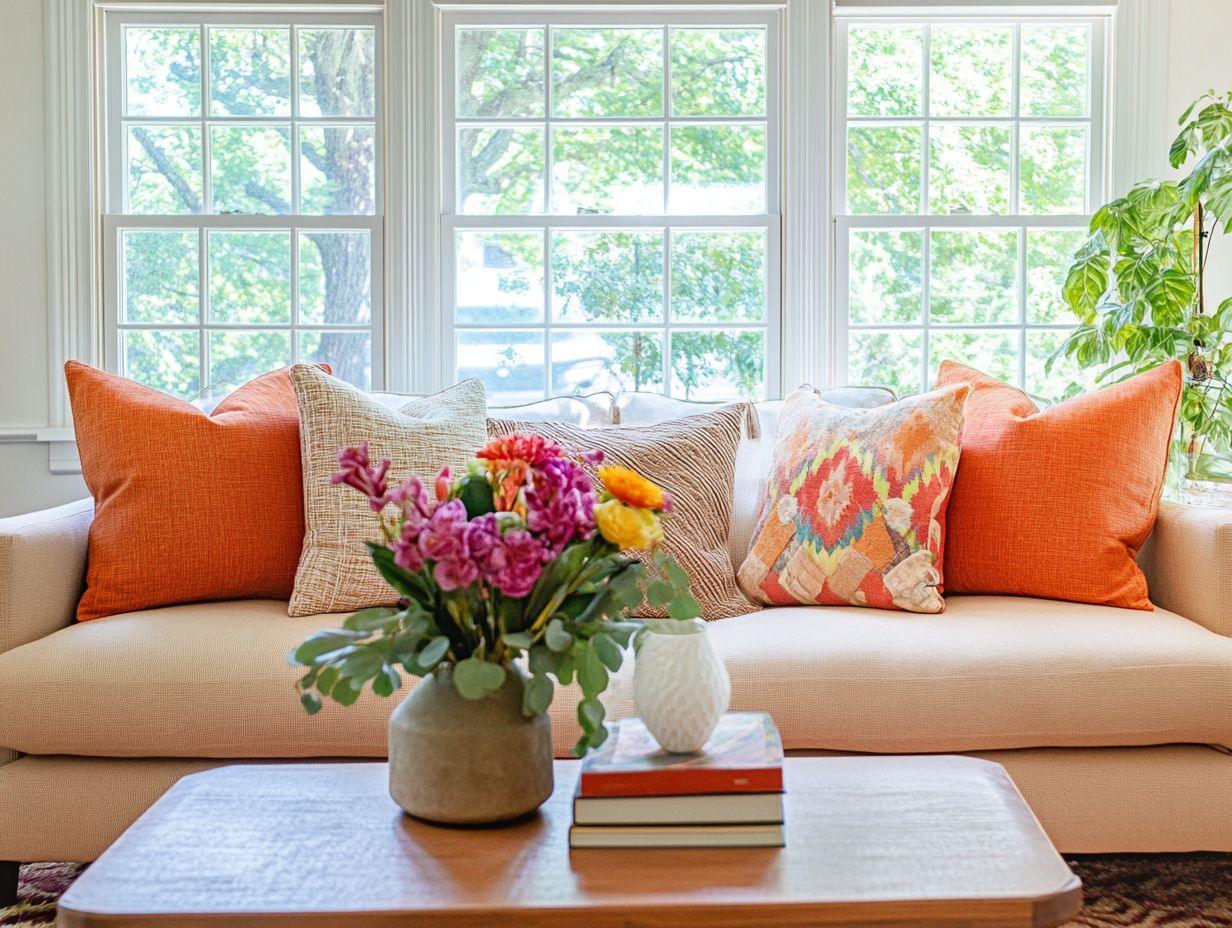
When staging a home, it is crucial to consider specific strategies tailored to each room to maximize both appeal and functionality. Effective staging of the living room can establish a focal point for gatherings, while staging in the kitchen should emphasize cleanliness and efficiency.
The primary bedroom ought to evoke a sense of tranquility and relaxation, and well-designed outdoor spaces can significantly enhance curb appeal, offering a strong first impression to potential buyers.
How to Stage a Living Room
To effectively stage a living room, one should prioritize furniture arrangement that encourages conversation and fosters an inviting atmosphere for potential buyers. It is advisable to incorporate decorative items that enhance the character of the space without overwhelming it, while also considering neutral color palettes that have broad appeal. The objective is to establish a comfortable yet stylish environment where prospective buyers can easily envision themselves entertaining guests or enjoying time with family.
Begin by evaluating the existing layout; arranging sofas and chairs in a circular or L-shaped formation can promote interaction among individuals. It is essential to ensure that pathways are unobstructed, facilitating easy movement throughout the room. Adequate lighting is critical; a combination of overhead, table, and floor lamps can highlight the room’s best features while creating a warm ambiance.
The significance of decorative elements such as throw pillows and area rugs should not be underestimated, as they can introduce personality to the room without causing distraction. Additionally, incorporating plant life or fresh flowers can invigorate the space, enhancing its overall appeal to prospective buyers.
How to Stage the Kitchen
Effective kitchen staging is essential, as this area frequently serves as the heart of the home. To begin, it is important to conduct a thorough cleaning and decluttering process, utilizing suitable cleaning supplies to ensure that every surface is well-maintained and visually appealing.
Organizing closets and removing excess items from countertops will help showcase the space, making it appear larger and more functional, thereby increasing its appeal to potential buyers.
Along with decluttering, it is advantageous to strategically arrange appliances to enhance accessibility while maintaining visual aesthetics. For example, it is advisable to keep only the most frequently used appliances, such as the coffee maker and toaster, on the countertop, while storing less frequently used items in cabinets or pantries.
This practice not only creates a more open and inviting atmosphere but also emphasizes the kitchen’s usability.
Highlighting the countertop space with aesthetically pleasing items, such as a fruit bowl or decorative cutting board, can draw attention without overwhelming the area. Furthermore, incorporating stylish yet practical storage solutions, such as drawer organizers or hanging racks, can significantly enhance the kitchen’s functionality.
How to Stage the Primary Bedroom and Bath
Staging the primary bedroom and bathroom is crucial for establishing a serene and inviting atmosphere that appeals to potential buyers. Utilizing neutral tones in decor can evoke a sense of calmness, while thoughtfully arranging furniture can highlight both space and comfort. Paying close attention to detail in these areas can foster an emotional connection, enabling buyers to envision themselves unwinding in these personal retreats.
Selecting soft color schemes such as beige, pale gray, or muted pastels can significantly enhance the airy quality of the room. Furthermore, incorporating simple yet elegant decor choices, including tasteful artwork and plush bedding, can contribute to a sophisticated ambiance.
In the bathroom, it is advisable to display fresh towels and integrate elements such as scented candles or potted plants to suggest relaxation and self-care. The layout should emphasize flow; ensuring easy movement between spaces will allow prospective buyers to visualize the everyday use and functionality of these intimate areas.
How to Stage Outdoor Spaces

Staging outdoor spaces is essential for enhancing curb appeal and creating an inviting atmosphere that attracts potential buyers from the moment they arrive.
These areas should function as an extension of the home, seamlessly integrating the comfort of indoor spaces with the natural beauty of the outdoors. To accomplish this, it is advisable to incorporate lush landscaping elements, such as vibrant flowers, well-maintained shrubs, and strategically positioned trees that offer both shade and aesthetic value.
When arranging outdoor furniture, it is important to establish a coherent layout that fosters conversation and relaxation, such as clustering chairs and tables together. The use of soft lighting, such as string lights or lanterns, can create a warm ambiance as the sun sets, further enhancing the property’s appeal.
Moreover, it is crucial to ensure that pathways are clear and inviting, facilitating a welcoming flow from the indoor areas to the outdoor spaces. This attention to detail contributes to a cohesive and well-designed property overall.
Do’s and Don’ts of Home Staging
Understanding the principles of home staging is crucial for maximizing a property’s appeal to potential buyers.
A strategic approach to staging can significantly influence how a property is perceived. For example, it is advisable to declutter spaces, as clean and organized rooms enable buyers to envision their own belongings fitting seamlessly into the environment. Additionally, utilizing natural light can contribute to an inviting atmosphere; therefore, it is essential to ensure that curtains are drawn back and windows are cleaned. Conversely, one should not neglect the exterior of the home, as it also plays a vital role in creating a welcoming first impression.
Furthermore, overlooking minor repairs can present a common pitfall; ensuring that all aspects of the property are in good condition can greatly enhance buyer interest.
Should You Hire a Professional Stager or DIY?
Determining whether to engage a professional stager or pursue DIY staging is a crucial consideration for home sellers, as both options present distinct advantages and associated costs. Professional stagers bring valuable expertise that can transform a space into an appealing, market-ready home, potentially resulting in a quicker sale and a higher sale price. Conversely, DIY staging allows sellers to reduce expenses and incorporate their personal style; however, it may not achieve the same impact as professional staging.
Furthermore, the costs related to hiring a stager can vary considerably, typically ranging from several hundred to several thousand dollars, depending on the size of the home and the extent of the staging services required. Many sellers find that this investment yields substantial returns, as well-staged homes often receive significantly increased offers and closing prices.
In contrast, DIY staging may be more cost-effective, enabling sellers to experiment with various styles and arrangements to identify what appeals to potential buyers. Nonetheless, this approach can be time-intensive and may lack the polished finish that buyers generally expect.
Ultimately, carefully weighing these advantages and disadvantages is essential for making an informed decision that ensures the home captivates prospective buyers.
Moving Forward with a Staged Home
After staging your home, it is essential to implement a comprehensive marketing strategy to effectively showcase its most appealing features to potential buyers.
Utilizing high-quality listing photographs that emphasize the staging efforts will not only attract buyers’ agents and interested parties but also reveal key selling points that enhance the property’s marketability. This investment in staging, when paired with a strategic marketing approach, can significantly influence the overall selling process.
Marketing Your Staged Home
Effectively marketing a staged home is essential for attracting the appropriate buyer and achieving a successful sale. A comprehensive marketing strategy, which includes staging recommendations and professional photography, can significantly enhance the visibility and appeal of the home across various listings and advertisements. By emphasizing the unique features and inviting atmosphere created through staging, sellers can resonate with potential buyers and leave a lasting impression.
In the current digital landscape, leveraging social media platforms is crucial for reaching a broader audience. Engaging posts featuring striking photographs can generate interest and drive traffic to property listings. Utilizing platforms such as Instagram and Facebook enables homeowners to present their staged spaces in a vibrant and relatable manner, fostering a sense of connection with potential buyers.
Professional photography is particularly important, as it captures the essence of each room, illustrating not only the physical space but also the lifestyle it offers. This combination of strategic marketing techniques and high-quality visuals ensures that the staged home distinguishes itself in a competitive market.
Final Thoughts on Home Staging
Home staging is not merely an aesthetic choice; it is a strategic investment in the selling process that can significantly influence buyers’ perceptions and decision-making. By cultivating an emotional connection through thoughtful staging, sellers can enhance the appeal of their homes, ultimately facilitating a successful sale at an optimal price.
The importance of creating an inviting atmosphere cannot be overstated, as it enables potential buyers to envision their lives within the space. Carefully curated decor, strategic furniture placement, and a clean, fresh environment all contribute to this transformative effect.
When a home conveys warmth and livability, it elicits positive emotional responses that can lead to more rapid offers and even competitive bidding situations. As sellers navigate this process, it is essential to understand that effective staging extends beyond mere beautification; it is a critical step toward ensuring market readiness and maximizing value in a competitive real estate environment.



